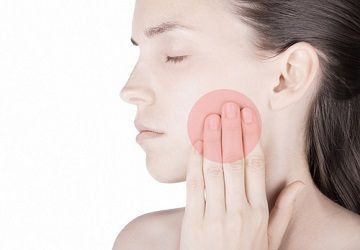Weekly Tech: Alternative Pain Management
Technology is quickly transforming dentistry. From digital record-keeping to machines that seem straight out of a SciFi feature, the 21st century has gifted the medical industry some amazing devices. Dentists are especially proactive about adopting new technology in their practices, so DMD is bringing you a weekly spotlight on some of the best products and research on the market. Continue below to read about this week's focus, alternative pain management.

Opioids are commonly prescribed for dental pain despite the fact that they are often ineffective.
Root canals, cavity fillings, wisdom teeth removals and similar procedures can often result in days or weeks of residual pain for patients.
RELATED:
- What Mighty MolarMan & Friends Can Teach Dentists About Digital Outreach
- Growing Gig Economy Presents Complex Wage Issues
- Why I Love My Second Home
While opioid medication can help, they can easily be abused or otherwise cause further harm to a patient. Using different medications and non-medicinal resources to reduce a patient’s discomfort are key in assisting them through their recovery without risking the side effects associated with opiates.
Lauren McKnight, an assistant professor of clinical education at the University of North Carolina-Eshelman School of Pharmacy, recommends using multiple methods to help a patient dealing with acute or chronic pain.
In an article published by Pharmacy Times, she discusses using a multimodal analgesic approach to helping patients manage both nociceptive pain, which is caused by damage to the body or some form of external stimulus, and neuropathic pain, which is caused by damage to neurons.
According to the National Institutes of Health, patients can suffer from both nociceptive and neuropathic pain after dental treatment.
Nociceptive pain in dental patients occurs as a result of some form of underlying damage to a tooth, and may lead to a procedure. If it occurs after a procedure, stop-gap measures should be implemented until the area can fully heal.
Professor McKnight explains that using non-opioid medications can help a patient manage their pain, and recent research developments offer multiple options for patients. These can range from over-the-counter pills with acetaminophen to intravenously delivered ibuprofen. The latter in particular has been shown to be effective in post-operative patients, though oral medications should be prescribed where possible instead.
Non-opiate oral medications used in combination with each other are the most effective, McKnight says.
Neuropathic pain, which can often be chronic, can occur after root canals and other procedures. The chief issue with neuropathic pain is diagnosing it — many times, there is no clear cause for the discomfort. As a result, it can be misdiagnosed, or an improper treatment may be administered.
Treating neuropathic pain with non-opiate medications is also possible, McKnight says.
The American College of Physicans says diagnosing a patient’s pain is a crucial aspect of treating them properly. In a 2012 presentation, Minnesota Head and Neck Pain Clinic Director of Medical Services Miles Belgrade explains how doctors can accidentally misdiagnose a patient, as well as how to avoid doing so.
Dr. Belgrade also recommends using less addictive medications in combination with each other to help patients manage their pain and using non-medicinal treatments when possible.
Alternatively, numbing the affected area can help patients manage pain without requiring them to take oral medications. An article published in the Journal of the American Dental Association found that over-the-counter desensitizing toothpastes are recommended to about half of all patients. Using a fluoride varnish, another non-medicinal treatment, was also used for about a third of the patients in the study.
A fluoride varnish is placed onto the tooth directly by a dentist or other professional and protects it as it heals. Desensitizing toothpaste similarly helps numb problem areas, limiting the discomfort a patient feels. The study found that using both methods at the same time helped the most, echoing McKnight’s recommendation of a multimodal approach.
Alan Carr, the Chair of Dental Specialties with the Mayo Clinic, agrees, explaining that desensitizing toothpaste combined with covering up a sensitive or damaged part of a tooth using a varnish or other material.
Explaining proper dental care methods like when to brush and floss can also help improve a patient’s quality of life. In Dr. Carr’s example, he recommends avoiding brushing after eating or drinking anything acidic due to the effect acidic substances have on teeth. Brushing can erode the tooth’s enamel more quickly, he says.
Discover more Dentist’s Money Digest® news here.
ACTIVA BioACTIVE Bulk Flow Marks Pulpdent’s First Major Product Release in 4 Years
December 12th 2024Next-generation bulk-fill dental restorative raises the standard of care for bulk-fill procedures by providing natural remineralization support, while also overcoming current bulk-fill limitations.